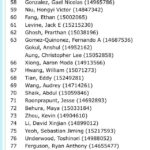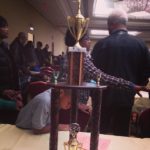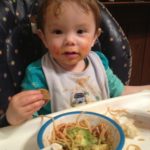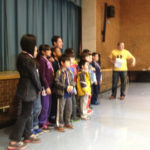A couple days ago I stumbled upon a Brownstoner post from May entitled “From the Forum: How Do I Navigate Park Slope’s Public Schools?” which was in fact a question about North Park Slope middle school admission policies specifically. I live in North Slope, have sent all three of my kids to the North Slope zone elementary school (PS 282) and have been through the middle school process with my oldest child. I’m also an elected member of CEC 13 and the Youth Chair of CB6 (which overlaps mostly with District 15, but overlaps D13 in North Slope).
Public middle school admissions in NYC are notoriously complex, but they are especially confusing in North Park Slope (by which I mean the District 13 portion of North Slope, which is the PS 282 zone as well, bound by – and please, look at the district map on NYC School Search – Union St between PPW and 6th Ave, 6th Ave, President from 6th to 3rd Ave, 3rd Ave to St. Mark’s, St. Mark’s to 4th Ave, 4th Ave to Bergen, Bergen to 5th Ave, 5th Ave to Flatbush and then Flatbush to Plaza and Union St at GAP).
I posted a response – albeit a few months after the original post. I am sharing it here as I hear a lot of questions from parents in the Slope and surrounding neighborhoods about this policy. It’s very confusing, but the headline is that if your LIVE in the 282 zone, your child is conferred District 15 (e.g., schools like 447, 88, 442, 51, etc.) middle school choice, even though technically North Slope is part of District 13. This is a function of where you live, not where your child goes to elementary school.
Anyway, here’s my response which includes 4 examples that are the most common scenarios I hear about:
… (Y)ou should always go to schools.nyc.gov/schoolsearch/ first to check to see what the situation is with your home address and its elementary zone and overall district, which constrains (somewhat) 1) your child’s movement [choice] among elementary schools and 2) your child’s middle school choice.
First, know that middle school is a function of 1) the district of your child’s elementary school and 2) the district of your home address. In many cases these are the same, but when they are not, you will get access to BOTH sets of school[s] and the middle school form that will be generated by your child’s elementary school will include the union of the two districts’ middle schools.
Regarding the 282 zone [District 13 portion of North Slope], it is correct that the 282 zone (i.e., addresses in the 282 zone – a.k.a. “North Slope ”) “flips” to D15 for middle school. [Note Inside Schools also validates this – “Because of quirks in zoning, children who are zoned for PS 282, part of District 13, are eligible to attend District 15 middle schools and many take advantage of that option.”]
That is, while PS 282 is a (D)istrict 13 elementary school, (home) addresses (i.e., student who live IN, not attend school AT) PS 282 zone will get District 15 choice.
Here are 4 scenarios:
1. You live in the 282 zone and your child goes to PS 282 for elementary school (my first hand experience): Your child will get D15 schools (e.g., 442, 447, 136, 51) because of your address AND will also get D13 schools (Arts & Letters, the Dock Street school, eventually the new middle at Atlantic Yards) because 282 itself is a D13 elementary. (D15 + D13 = D15/D13)
2. You live in the PS 9 zone [Prospect Heights] and your child goes to 282. Your child will ONLY get D13 choice because the PS 9 zone does not have this “quirky” rule [about D15] and 282 is a 13 school. (D13 + D13 = D13)
3. You live in the 282 zone and your child attends 321 [not getting here into the how of how you pulled that off]. Your child will ONLY get D15 choice because you live in the 282 zone (which flips to D15) and PS 321 is a D15 school. (D15 + D15 = D15)
4. You live in Prospect-Lefferts Gardens (D17) and your child attends 282. Your child will get access to both D13 and D17 middles (but NOT D15) (D13 + D17 = D13/D17)
[Adding four scenarios – three scenarios for PS 133 and one for PS 9…
5. You live in the 282 zone and send your kids to PS 133. Your child will get D15 middle school choice (because of your address) AND D13 choice (because PS 133 is technically a D13 elementary school, even with its dual-district elementary school admissions policy). (D15 + D13 = D15/D13)
6. You live in, say, South Slope – i.e., D15 – and you send your kids to PS 133. Your child will get D15 middle school choice AND D13 middle school choice. (D15 + D13 = D15/D13)
7. You live in, say, Clinton Hill – i.e., D13 – and your kids to PS 133. Your child will ONLY get D13 middle school choice (D15 + D13 = D15/D13).
8. You live in North Slope (i.e., the 282 zone) and send your kid to PS 9. Your child will get D15 choice from your home address and D13 choice because PS 9 is a D13 school. (D13 + D13 = D13)]
Note, 282 also has a middle school – MS 282. MS 282, along with MS 266 on Park Place and 6th in Park Slope [but temporarily relocated to the PS 93 building in Crown Heights for two more years while the building is refurbished], are D13 schools (despite being located in the D15 middle school choice catchment, to make it even more confusing) and adhere to the same policies as other D13 middles such as MS 113, Unisons, Fort Greene Prep, etc … with one additional wrinkle — MS 282, like MS 8 and Arts & Letters also in D13, give an additional admissions preference to “continuing on” students from their respective lower schools, as these 3 schools have, to some degree or another, a K-8 model.
I hope this helps clear up some of the confusion around this policy a bit (and note I’m not getting into out of district variances, which is a hole other matter). Again, this policy is something parents ask about a lot. While North Slope parents have lots of reasons for choosing other elementary schools than their zone school, 282 (or nearby 133, also in North Slope, which is de-zoned), I always cringe a little bit when someone who lives in North Slope cites D15 middle school choice as the only reason they did whatever they did to secure a D15 elementary school seat since their home address had already conferred to their child District 15 middle school choice regardless of the district of their child’s elementary school.







